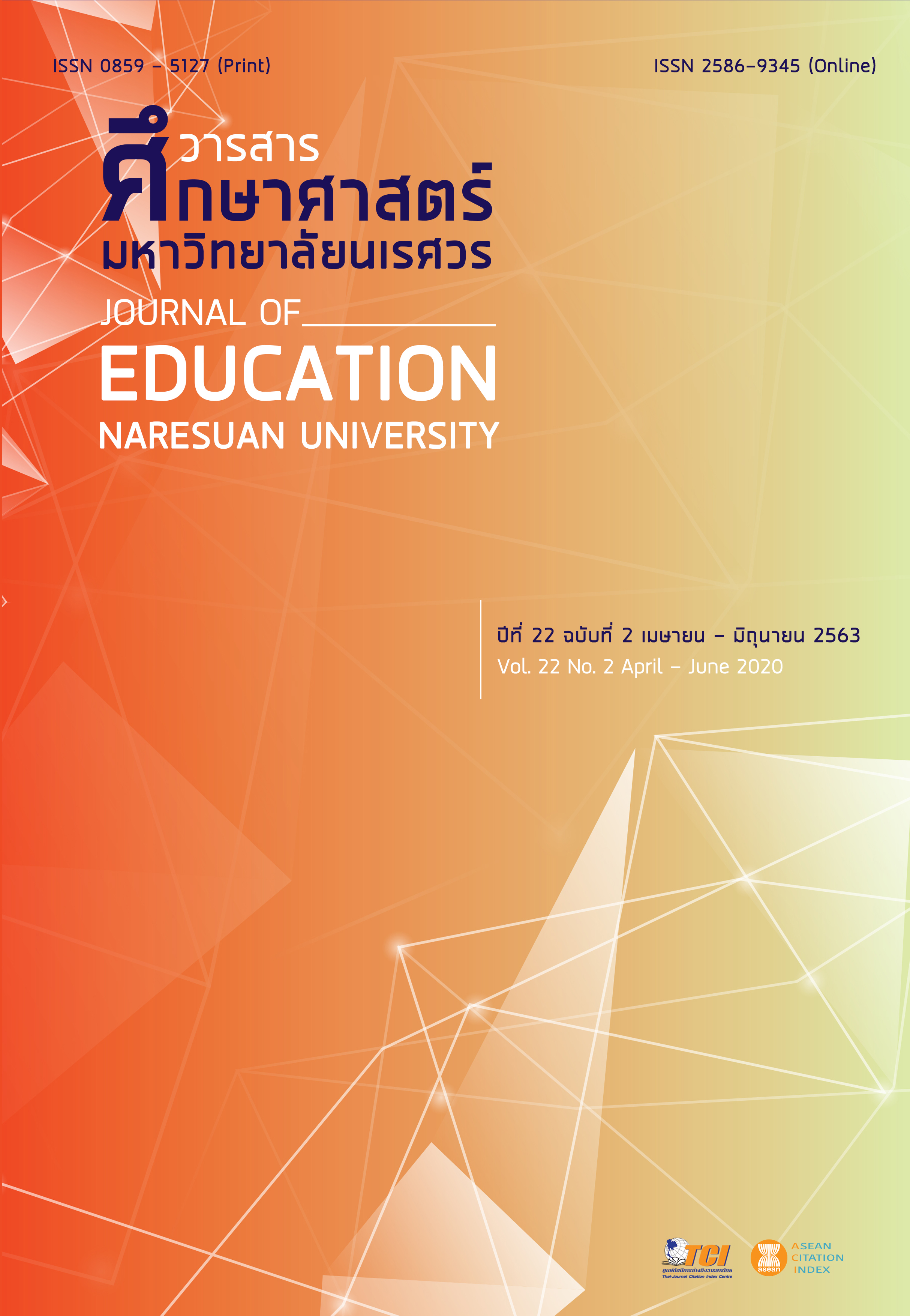AN ACTION RESEARCH FOR DEVELOPING GRADE 10TH STUDENTS’ SCIENTIFIC CONCEPTUAL UNDERSTANDING AND SCIENTIFIC REASONING BY USING CONCEPTUAL CHANGE APPROACH ON STOICHIOMETRY
Main Article Content
Abstract
The purpose of this classroom action research was to investigate ways to develop scientific conceptual understanding and scientific reasoning in Stoichiometry through conceptual change approach for grade 10th students. The research methodology was based on the concept of Kemmis through continuous PAOR cycles in 3 times. The data of this study were collected by reflective learning tool. The qualitative data were then analyzed by content analysis and verified of reliability by using resource triangulation. From the result, it was found how to teach on conceptual change approach in order to develop scientific conceptual understanding and scientific reasoning as follows: 1) The questions were used in student activity sheets to repeat the original scientific conceptual understanding and must be associated with the new conceptual understanding, 2) there are questions to discuss in classroom to change the students’ scientific conceptual understanding, and 3) the situations of problem should be interesting and must be on the same theme in 3 cycles. From using conceptual change approach as above could enhance students’ conceptual understanding to level of complete understanding and also reach their scientific reasoning to high level.
Article Details
The owner of the article does not copy or violate any of its copyright. If any copyright infringement occurs or prosecution, in any case, the Editorial Board is not involved in all the rights to the owner of the article to be performed.
References
Anuworrachai, S. (2010). Effects of biology instruction using the argument-given inquiry instructional model in ability in scientific explanation making and rationality of upper secondary school students (Master thesis). Bangkok: Chulalongkorn University. [in Thai]
Bao, L., et al. (2009). Learning and scientific reasoning. Science Magazine, 323(5914), 586-587.
Chaisatit, N. (2012). Conceptual change and the motivational beliefs on cell division of Mathayomsuksa IV students using conceptual change strategies (Master thesis). Khon Kaen: Khon Kaen University. [in Thai]
Chanunan, S. (2014). Writing for science learning: Theoretical criticism and its practical implication for classroom uses. Journal of Education Naresuan University, 16(4), 200-211. [in Thai]
Kijkuakul, S. (2014). Instruction for science: A guide for the 21st century. Phetchabun: Juldis Printing. [in Thai]
Laohapaiboon, P. (1999). Science teaching. Bangkok: Thai Wattanapanich Printing. [in Thai]
Lawson, M. (2009) Understanding and treating children who experience interpersonal maltreatment: Empirical findings. Journal of Counseling & Development, 87(2), 204–215.
Martin, F., Tanja, D. B., & Ilka, P. (2006). Results of an interview study as basis for the development of stepped supporting tools for stoichiometric problems. Available from http://www.rsc.org/images/Fach%20paper%20final_tcm18-76278.pdf
Mungsing, W. (1993). Students' alternative conceptions about genetics and the use of teaching straegies for conceptual change Wancharee Mungsing (Master thesis) U.S.A.: University of Alberta.
Sukkho, S. (2013). Effect of the using conceptual change teaching strategy on conceptual understanding in radioactivity and nuclear energy topics for Matayomsuksa IV students (Master thesis). Phitsanulok: Naresuan University. [in Thai]
The Institute for the Promotion of Teaching Science and Technology. (2011). Research report on TIMSS 2011 in science. Retrieved October 31, 2016, from http://timssthailand.ipst.ac.th/timss/reports/timss2011-science-report [in Thai]


